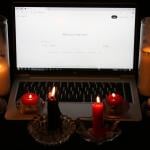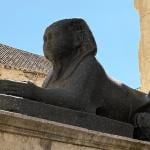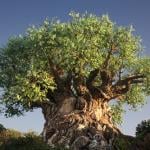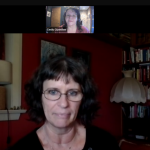In the Wheel of the Year, Yule isn’t very important. It’s one of the minor holidays. It’s a bottom-rung holiday, less important than the four major fire festivals, and less important than the two most important of those: Beltane and Samhain.

Yet Yule is given a lot of attention. We decorate, we buy presents, we sing holiday songs and give Yule far more attention that it’s equally important counterparts Ostara, Midsummer and Mabon. We treat Yule as if, well, as if it’s Christmas.
I think that’s the real reason Yule receives so much attention. Maybe because we all have some fond memories of the Christmas season, but I think more because Christmas drowns everything else out. Our over-emphasis on Yule is a way to stand up and declare “We are here! We exist!”
This year I have consciously abstained from Christmas. I am buying no presents, attending no holiday celebrations, and, except for a Happy Holidays sign on my front door, I have not decorated. I’m celebrating Yule as a solitary and eschewing group functions. At first, this seemed a bit ascetic but as Yule draws closer I’m finding myself more at peace and even more joyful.
In a way, abstaining from Christmas has reclaimed Yule for me. Without all the stress of all these outside expectations and overwhelming noise, there is a quiet dignity to the season. I may even hold a vigil until dawn this year. The Winter Solstice is a switch, a shift from darkness into light. It is the harbinger of Imbolc, of Candlemas, that cold festival of ice and fire.
I’m not suggesting everyone celebrate in my Grinchy, hermity fashion, but I think it’s worthwhile to think about how much of our Yule festivities are shaped by Christmas for good or ill, and what Yule looks like entirely separate from the pressures and influence of the overculture. What does Yule look like from a purely Pagan perspective? Away from the rush and noise of Christmas?











